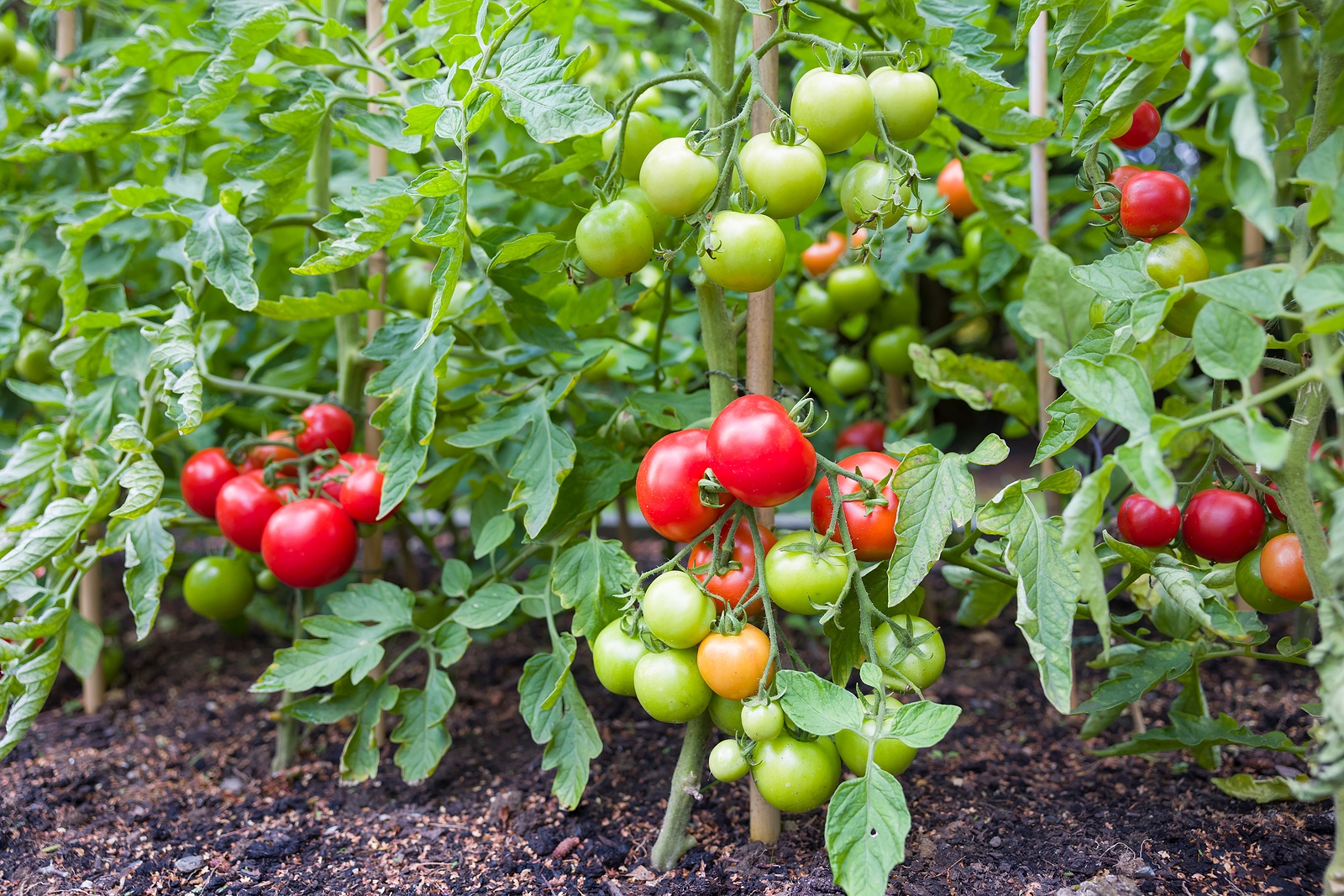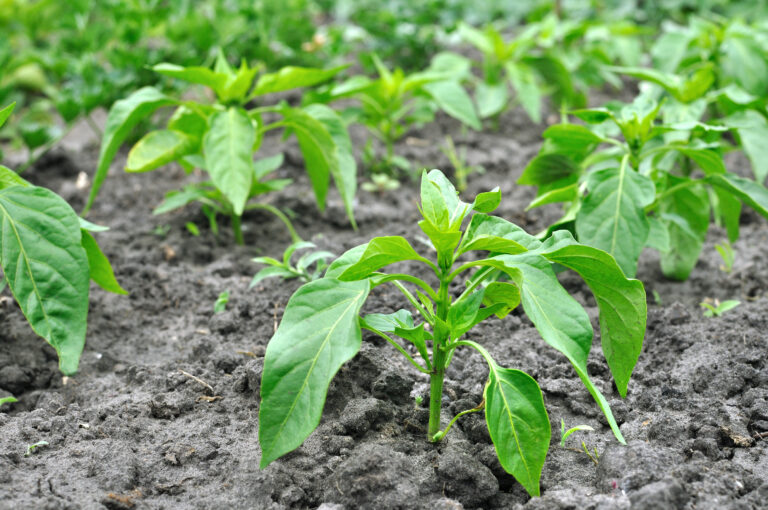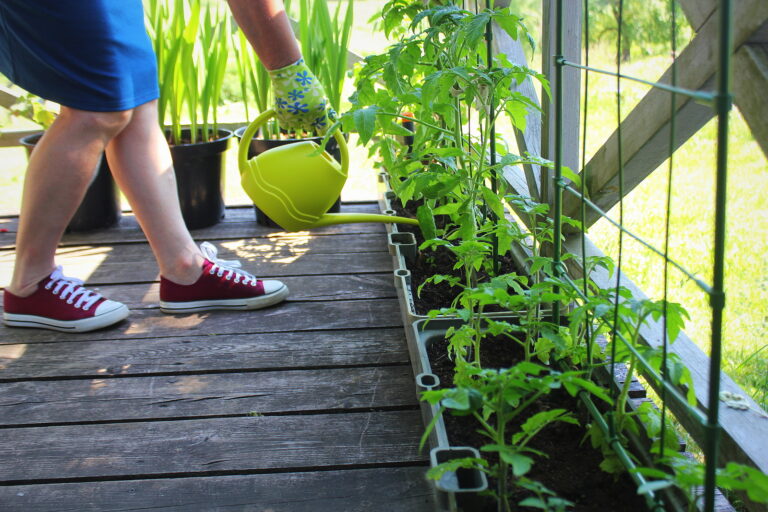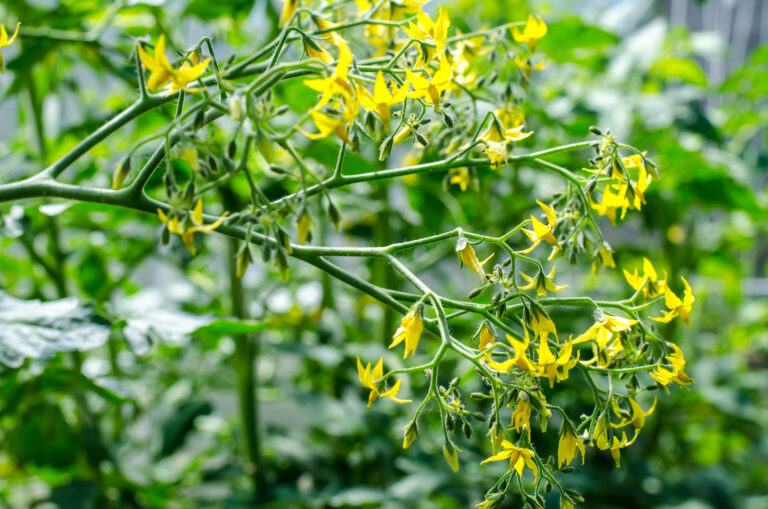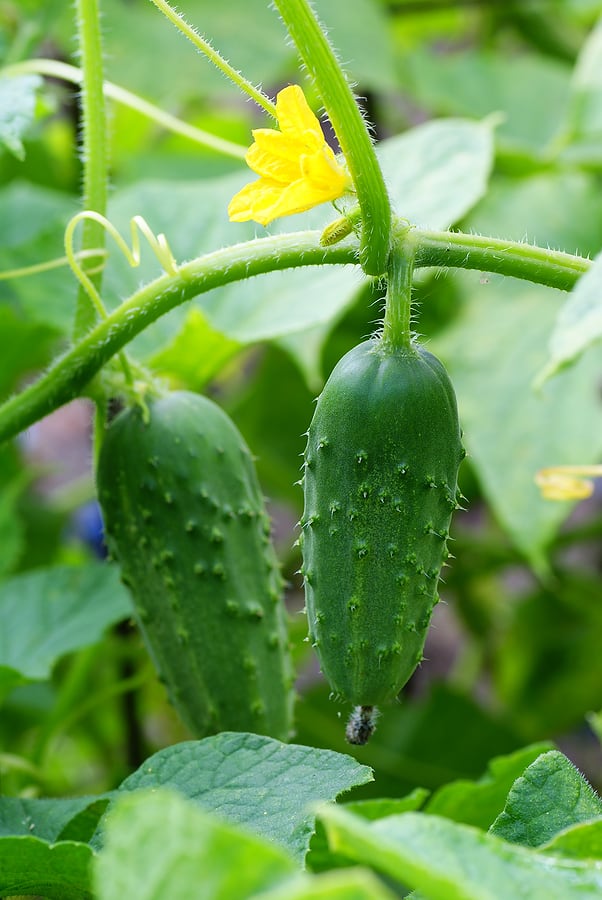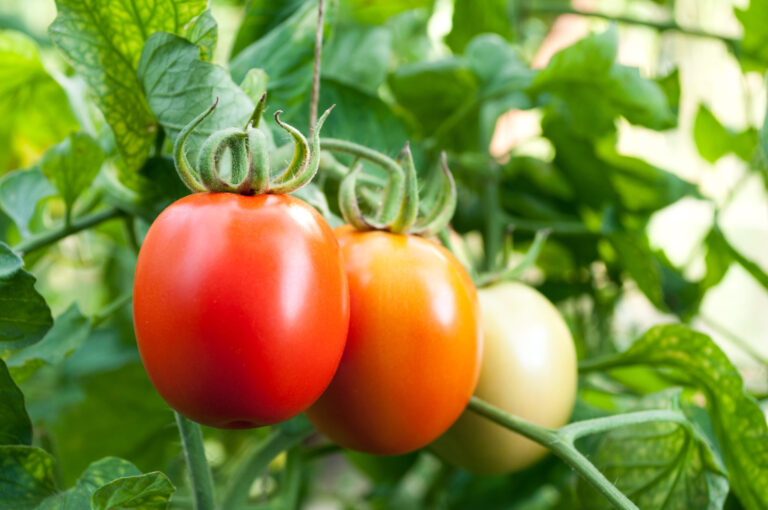Watering and Feeding Tomatoes: Expert Tips for a Healthy, Productive Crop
One of the biggest lessons I’ve learned in my years of growing tomatoes is that consistent watering and proper feeding make all the difference between a thriving, high-yielding plant and one that struggles with disease, blossom-end rot, or weak growth. Tomatoes are heavy feeders and need the right balance of nutrients and moisture at every stage of their development.
Water too much, and your plants may suffer from root rot or produce watery, bland fruit. Water too little, and you risk cracked tomatoes, blossom-end rot, and stressed plants that stop producing altogether. Similarly, overfeeding can lead to lush, leafy vines with few tomatoes, while underfeeding results in slow growth and poor yields.
In this guide, I’ll share my best practices for watering and feeding tomatoes based on firsthand experience—how to keep moisture levels just right, when and how to fertilize, and common mistakes to avoid. Whether you’re growing in the ground, raised beds, or containers, these tips will help you grow strong, healthy tomato plants that reward you with a bountiful harvest all season long.
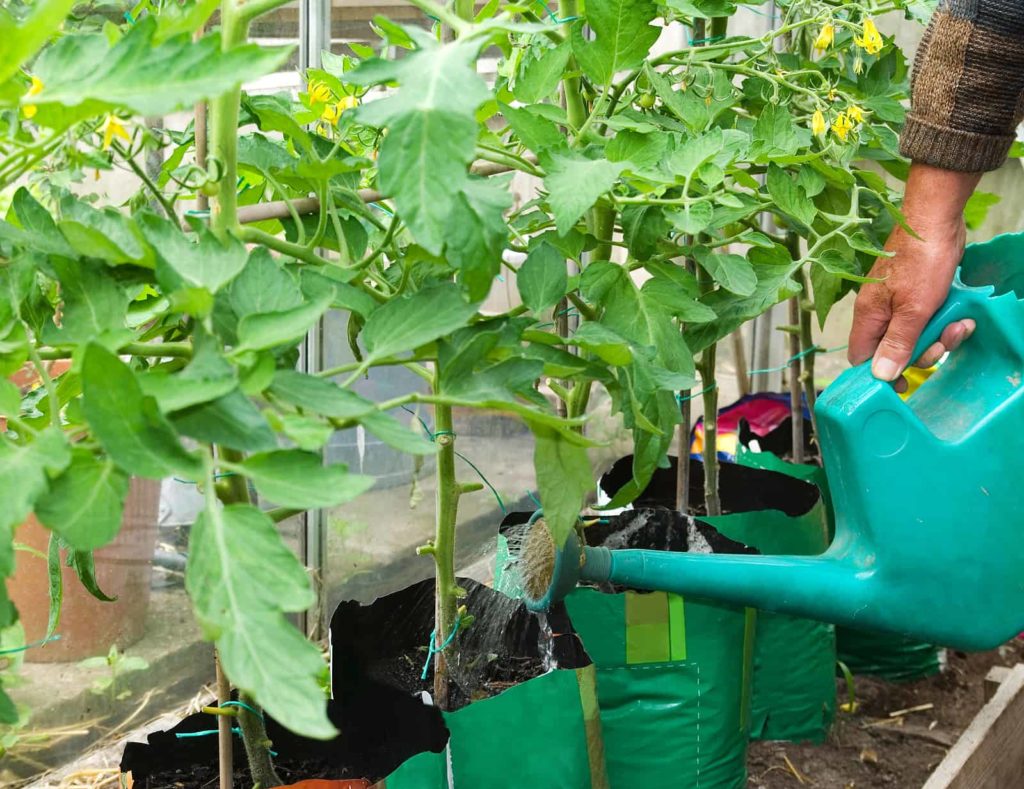
Watering Tomatoes
Tomatoes require even watering. Never let the soil completely dry out. A deep soaking once a week is better than several light waterings. A good gauge is to give each tomato plant between 1 and 2 inches of water each week. An inch of water means covering a square foot with 1 inch of water. That requires a bit more than a half gallon of water. An inch of water for a garden bed that is 4 feet by 8 feet is about 20 gallons per week.
- Tomatoes require regular even watering. Keep the soil moist but not wet.
- Water deeply. Water thoroughly before the soil dries out.
- Water at the base of the stem; avoid wetting leaves.
- Leaves may curl on hot days; this is a way for plants to conserve moisture and is not necessarily a sign of distress. If leaves wilt in the morning, tomatoes need an immediate slow, deep watering.
- Mulch with straw or aged compost around plants to prevent soil moisture evaporation.
- Keep the soil evenly moist–not too wet and not too dry. Too much water will drown the plants; too little water will stop fruit production.
- Test soil moisture by sticking your finger into the soil–if it comes out dry, it’s time to water; if it comes out wet, hold off.
- During periods of drought deep-water tomatoes once a week and slow soil moisture evaporation by mulching with aged compost or straw.
- A constant, even supply of water can prevent blossom end rot, but too much water will cause it.
Fertilizing Tomatoes
Tomatoes are medium to heavy feeders. A 2-inch layer of compost or composted manure should be spread across each square foot of the tomato patch twice a year, once in fall and again in spring two weeks before planting. Liquid seaweed which is high in phosphorus–the element essential for fruiting–can be given once a week. Side-dress plants with compost at flowering time. When fruits appear, use manure tea every 10 days until harvest.
Tomatoes require a moderate amount of nitrogen and ample amounts of phosphorus and potassium. Abundant soil phosphorus is important for early high yields. Too much nitrogen will encourage leaf growth, but not flowers and fruit or soft fruit susceptible to rot. Once the plants are well established and in full blossom, feed your tomatoes with a weak compost tea or fish emulsion every 2 weeks from the first blossoms set until the end of harvest.
- Foliar-feed (spray the leaves of your plants) every 2 weeks with liquid kelp or compost tea. Avoid feeding tomatoes too much nitrogen—you won’t get the fruit you want. Hold off on feeding once plants begin to flower.
- Side dress tomatoes with dilute fish emulsion or kelp meal every 3 to 4 weeks. Add aged compost around plants at midseason.
- Blossom-end rot can be the result of uneven watering or a lack of calcium in the soil. Crushed eggshells added to spot watering every two weeks can provide the calcium needed.
- Compost tea applied every two weeks will provide nitrogen and other nutrients needed.
- Prepare the tomato-growing bed with well-rotted garden compost and a trowelful of aged manure added to the soil where each plant will grow.
- Add a trowelful of bone meal into the bottom of each hole–the extra phosphorus will speed ripening.
- Too much nitrogen will give you abundant foliage but delay ripening.
- Sprinkle additional nitrogen around each plant when the top leaves turn yellow or the stem turns deep purple.
- Fish emulsion you can find at the garden center. Compost tea is easily prepared: place a handful of compost in an old gym sock, tie off the sock, and place it in a container of water until the water turns the color of tea. Your compost tea is ready; it will contain all of the major and minor nutrients found in compost.
Tomato plant fertilizers
- A complete organic fertilizer 5-10-10 or 10-10-10 is a good alternative to compost tea or fish emulsion. (A cupful of fertilizer–about a half pound should be enough for 10 plants.) Avoid high-nitrogen fertilizers such as urea or ammonium sulfate which will produce tall green plants with little or no fruit.
Side-dressing tomatoes
- Side-dressing is easily accomplished: place the fertilizer in a one-inch-deep circular furrow around each plant. The furrow should be 3 or 4 inches away from the stem. Cover the fertilizer with 1 or 2 inches of soil and allow the rain or irrigation to carry the nutrients down into the root zone.
- Phosphorus is the most important tomato nutrient. Phosphorus supports root and fruit growth and contributes to good yields and early harvests.
Simple Schedule for Feeding Tomatoes
Here are tomato feeding instructions from seedling to harvest:
- Seedlings: Give tomato seedlings a balanced fertilizer once a month while they are still in the greenhouse or hothouse. Use a dilute fish emulsion, 3-3-3, or a nitrogen-phosphorus-potassium formula that is similar.
- Transplanting: When tomatoes are ready to go into the garden, dig a hole as deep as the length of the seedling. Place a layer of aged compost or well-rotted manure at the bottom. Add a handful of bone meal and 1 tablespoon of Epsom salt (which contains magnesium and sulfur to benefit roots). Next, add an inch or half-inch buffer layer of soil so that the plant’s tender roots do not set directly on the fertilizer. Set the seedling into the hole burying all but the top four branches or leaf sets.
- Two weeks after transplanting: Side-dress plants: water with compost tea or dilute fish emulsion
- After the first flowers appear: Side-dress plants: water with compost tea or dilute fish emulsion
- When fruit is the size of a golf ball: Side-dress plants: water with compost tea or dilute fish emulsion.
- First ripe tomato: Side-dress plants: water with compost tea or dilute fish emulsion.

Maintaining Tomatoes
- Mulch around the base of tomatoes with aged compost to slow soil moisture evaporation.
- For stronger plants and bigger fruit, pinch out all suckers that start to grow in the crotch of the main stem and side branches. Root the suckers in a starting mix to start a second crop for succession planting.
- As plants grow tall, remove leaves and branches from the bottom 12 inches (30cm) of the plant; this will help prevent the spread of soil-borne diseases.
- Night temperatures colder than 55°F (13°C) or day temperatures above 95°F (35°C) will keep flowers from setting fruit. Protect plants under a plastic tunnel or floating row cover.
- Protect tomato plants from extremes of temperature–cold and hot, strong winds, weeds, pests, and diseases.
- Place tomatoes in the garden where they will be protected from drying winds.
- Protect plants from cutworms with a paper collar set in the soil at transplanting.
- Protect roots by adding aged compost around each plant; aged compost will feed roots and protect them from the hot summer sun.
- Examine plants often to be rid of tomato hornworms and other pests early.
- Avoid fungal and bacterial diseases by watering at the base of plants and rotating tomatoes to new beds each year.
- Where summer temperatures exceed 95°F, shade cloth protection will protect leaves and fruit.
Tomato Growing Hub
Start here: The Ultimate Tomato Growing Guide: From Seed to Harvest
Growing Tips
- Getting Started with Tomatoes: A Gardener’s Guide to Success
- How to Choose a Tomato for Your Garden
- How to Choose the Right Tomato for Your Garden and Kitchen
- Growing Early-Season Tomatoes for Great Taste
- Heirloom and Hybrid Tomatoes
Planting Tips
- Tomato Seed Starting Tips
- Mastering Tomato Seed Starting: How to Grow Strong and Healthy Plants Indoors
- When to Plant Tomatoes: A Gardener’s Guide to Timing and Success
- Plant Tomatoes for a Thriving Crop: Sun, Soil, and Spacing
- How to Transplant Tomato Seedlings: A Gardener’s Guide
- Growing Tomatoes in Containers
Tomato Care
- Watering and Feeding Tomatoes: Expert Tips for a Healthy, Productive Crop
- Best Ways to Support Your Tomato Plants
- Pinching and Pruning Tomatoes: A Gardener’s Guide to Healthier, More Productive Plants
- How to Prune Tomatoes
- Grow Tomatoes on Stakes
- Best Companion Plants for Thriving Tomatoes: What Works & What to Avoid
Pest & Disease Control
- Tomato Growing Problems: Pests, Diseases, and Solutions
- How to Prevent Blossom Drop — Tomatoes and Peppers
- How to Identify Early Blight, Late Blight, and Leaf Spot on Tomatoes
Harvest & Preparation
- When and How to Harvest Tomatoes for the Best Flavor
- How to Ripen Tomatoes
- Planting Tomatoes for a Long Harvest
- Planting Tomatoes for a Fall Harvest: How to Grow Fresh Tomatoes Before Frost
- Tomato Flavor Explained
- Nine Ways to Cook and Serve Tomatoes
Garden Planning Books at Amazon:
- Tomato Grower’s Answer Book
- Vegetable Garden Almanac & Planner
- Kitchen Garden Grower’s Guide Vegetable Encyclopedia
- Vegetable Garden Grower’s Guide
Books to help you grow:

